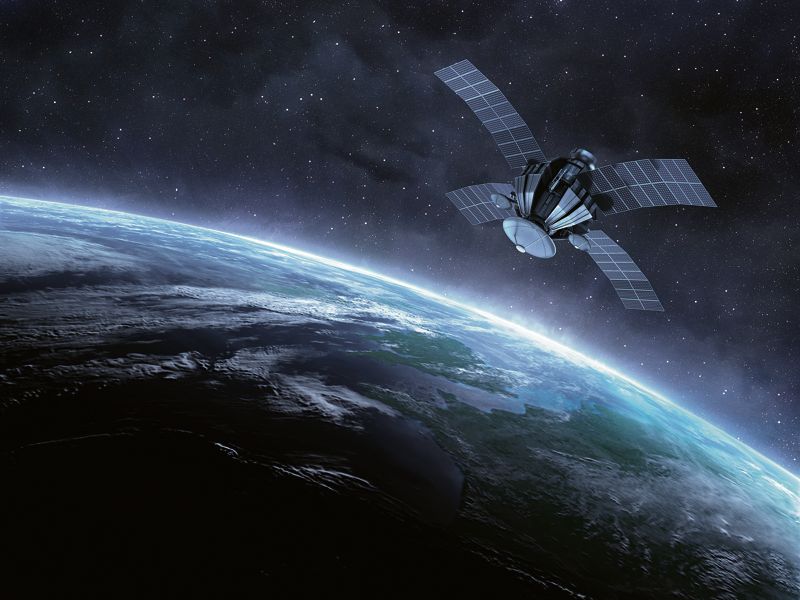RENOWNED airpower expert Giulio Douhet said, “The choice of enemy targets is the most delicate operation of aerial warfare.” Targeting involves a detailed process of selection of targets, vulnerability analysis, weapon matching and intelligence. Ultimately, of course, air targeting is all about intelligence and that means the ability to ‘see’ the enemy. This includes wherewithal in space and the use of sensors on other aerial platforms.
To that end, it was heartening to read about a Bengaluru-based space startup, Pixxel, winning a grant to manufacture miniaturised multi-payload satellites for the Indian Air Force (IAF) under the Ministry of Defence’s iDEX (Innovation for Defence Excellence) initiative. The 2019 Balakot airstrikes brought out the need for having all-weather remote-sensing capabilities, without having to rely on largesse from friendly allies for timely imagery.
Western nations such as the USA have had such capabilities since the early 1990s, like the Keyhole (KH) series satellites employed and used effectively during the Gulf War. With technology having evolved, entities are able to have state-of-the-art multispectral cameras on board much smaller, low earth orbit (LEO) satellites.
The Keyhole series and other older strategic sensor satellites were mainly geostationary, with electro-optical onboard sensors and cameras. Modern technology such as that available with the Pixxel startup, Israel Aircraft Industries and others enable low earth orbits with multispectral capabilities and high revisit times. The Shakuntala/TD-2 LEO is one such satellite, launched in April 2022 as a ‘ride share’ mission on the Falcon 9 rocket operated by Elon Musk’s Space X. Pixxel designed the TD-2 as a demonstration satellite, which is a part of a constellation of weather satellites. But once the mechanics of launch and orbital dynamics has been proven, these LEOs could well be engineered for day-and-night tactical military reconnaissance all over the world.
Pixxel claims that its micro-satellites have a resolution 50 times higher than the existing multispectral counterparts, designed for detecting, monitoring and predicting global weather phenomena. Weighing less than 150 kg, these micro-satellites have resolutions of the order of 10m per pixel, which compares favourably with the hyper-spectral cameras launched by NASA, the European Space Agency and ISRO. It has a lifespan of 10 years.
The fact that such a startup has emerged in the private sector is all the more laudable as aspects such as budgetary constraints can be addressed while collaborating with foreign vendors having deep pockets, such as Space X. Further, employing ISRO’s PSLV satellites for their launch would have attractive commercial payoffs for the nation’s space agency.The US Air Force Space Command has, of late, been exploring the use of commercial LEO and very low earth orbit (VLEO) satellites (250-300 km altitude) as options for communications and imagery. The IAF appears to be on a similar track in tactically exploiting the LEO space. The ability to have our own indigenous LEOs could dovetail with the nation’s military satellite programme seamlessly to also provide Battle Damage Assessment (BDA), again warranted during the Balakot operation.
Multispectral sensors would be invaluable for infrared and synthetic aperture radar cameras on these satellites to enable all-weather target analysis and BDA. The Pixxel satellites are expected to field sensors in the electro-optical, infrared, synthetic aperture radar and hyper-spectral applications.
An associated requirement would be to ensure the safety of LEO satellites from electronic jamming by adversaries and physical damage by space interceptors. Hence, the LEO and VLEO satellites being designed to “see and not be seen” provide better options for high-resolution imagery on low payload satellites, with obvious cost benefits for the operator.
‘The more the merrier’ is the current thinking on the exploitation of the commercial LEO space by leading air and space forces. Multispectral sensor capability on satellites would also provide the capability to detect enemy missile launches on the ground. The Ukraine war has exposed the Russian military as being virtually ‘blind in orbit’, with too few high-resolution satellites.
The sanctions on Russia by the West after the Crimean invasion have adversely impacted Moscow’s ability to get high-tech satellite technology. Typically, the best available Russian satellites’ imagery is of the order of 50 cm per pixel as compared to 5 cm for the Keyhole series and around 15 cm for private satellites, such as those of Maxar and Planet. Recently, satellite imagery available in the public domain has shown damage to Russian helicopters, ships in the Black Sea and civilian areas of Mariupol.
It is expected that the IAF would look for on-demand generation of high-resolution imagery and communication services in all-weather conditions from its Pixxel contract. Private companies in the business of selling satellite imagery would expect to raise revenue from their commercial applications. The government would have its own defence requirements for satellites. The main requirement would be to have satellites available on call to accomplish operational tasks.
Commercial satellite imagery has been available from companies such as Maxar and Planet since the Syrian war, but the Ukraine conflict has changed the game dramatically. With imagery costing as less as $10 per square km, even a hobbyist using his device can monitor wartime imagery, such as that from Ukraine and make sense of the progress of the battle.
This open-source intelligence could give resolutions as high as 3 metres as compared to the classified imagery sold at a premium by professional agencies.
The advent of private satellite imagery companies into the IAF’s targeting ambit augurs well for the future of sophisticated open and classified intelligence wherewithal for aspiring nations and private players.
Indigenous progress in satellite imagery will benefit IAF

www.google.com



